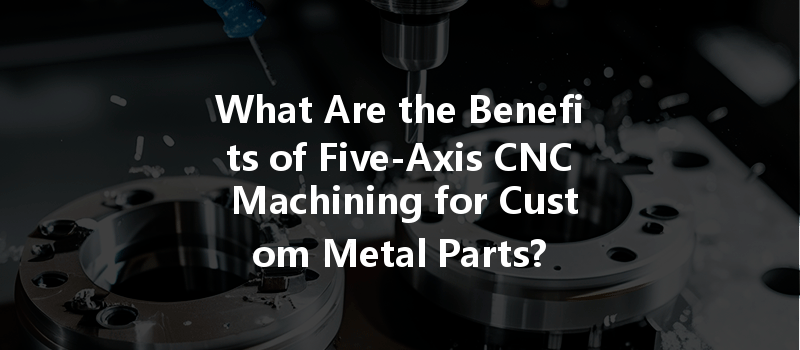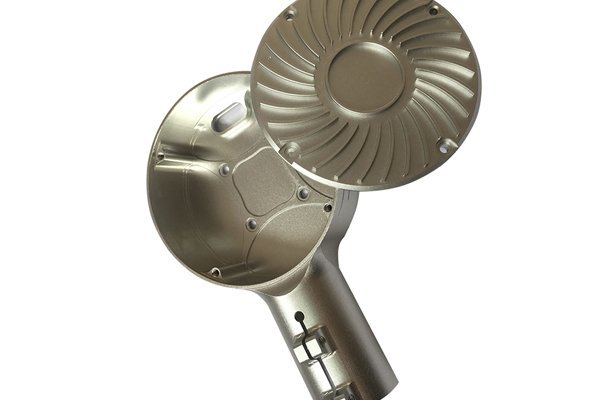Have you ever considered how airplane engines or precision medical devices are manufactured? These complex components often require extraordinary precision and intricate designs, facilitated by advanced manufacturing techniques. Among them, five-axis CNC machining has emerged as an indispensable process in producing custom metal parts. In fact, a recent study indicated that businesses adopting advanced CNC machining technologies improved their production efficiency by over 25%.
As we delve into the benefits of five-axis CNC machining, you’ll discover how this technology can revolutionize your manufacturing process, enhance your product quality, and ensure cost-effectiveness in your operations.
What is Five-Axis CNC Machining?
Before we explore the benefits, it is imperative we understand what five-axis CNC machining entails. CNC (Computer Numerical Control) machining is a manufacturing process in which pre-programmed computer software dictates the movement of machining tools and machinery. In five-axis machining, the tool can move along five different axes simultaneously, providing unprecedented flexibility for complex shapes.
The Axes Explained
This variety allows manufacturers to create parts with contoured surfaces, complex features, and precise dimensions that are hard or impossible to achieve with traditional three-axis machining.
Benefits of Five-Axis CNC Machining
One of the foremost benefits of five-axis CNC machining is the enhanced precision it offers. The ability to manipulate tools along multiple axes means fewer setups, ultimately reducing the margin for error. With its ability to produce intricate geometries and complex parts, five-axis machining is often favored in industries where precision is non-negotiable, such as aerospace, automotive, and medical device manufacturing.
For example, machined parts in the aerospace industry must meet stringent safety standards, with tolerances often within 0.0001 inches. Five-axis machining meets these demands with ease through its advanced capabilities.
The traditional approach to machining often involves multiple setups. Each setup requires the part to be fixed in the machine, which can lead to time lost in handling, clamping, and aligning the part. Five-axis CNC machining simplifies this process.
By allowing rotation around multiple axes, manufacturers can create complex parts in a single setup, which significantly reduces the time and labor needed for production. This efficiency is a game-changer, resulting in increased throughput and lower operational costs.
With five-axis CNC machining, designers and engineers can create parts that were previously impractical. The ability to reach undercuts and work on five sides without repositioning means designers are no longer limited by tooling constraints. This flexibility plays a critical role in developing innovative and unique product designs.
Improving the design process translates to creating better-performing parts. For instance, when manufacturing components for medical devices, where conforming to human anatomy can be critical, five-axis machining enables the production of parts that meet specific design requirements more effectively.
While the initial investment for a five-axis CNC machine may be higher than traditional systems, the long-term savings can be substantial. Reduced setup times, minimized errors, and increased production speeds contribute to lower overall costs per part produced.
Moreover, the technological advancement of five-axis machines often leads to less material waste since they can operate with higher precision, optimizing raw material usage. For custom part manufacturing, these savings can substantially improve profit margins.

Surface finish is crucial in many applications, especially in industries such as automotive and aerospace, where aerodynamics and aesthetics matter. The unique capabilities of five-axis machining enable operators to achieve superior surface finishes due to the ability to machine from multiple angles and reduce tool marks.
A smoother finish reduces the need for additional post-machining operations like polishing or grinding, further saving time and cost.
Five-axis CNC machining can also minimize tool wear. Standard machining processes may require constant repositioning, increasing friction and wear on the tools. With five-axis machining, the cutting tool can maintain a more consistent relationship with the part, reducing the likelihood of tool deterioration.
Additionally, the ability to use shorter tools for machining can lead to less deflection and a longer tool lifespan, resulting in less downtime for tool changes.
For industries that demand custom solutions, five-axis CNC machining allows engineers to explore more intricate designs without being stunted by traditional machining limitations. When creating custom metal parts, the machine can manage sophisticated shapes and unique finishes in a single run, which is often crucial for specialized applications.
For example, when producing prototypes for automotive parts, manufacturers can quickly iterate on designs and production processes, enhancing innovation and responsiveness to market demands.
How to Integrate Five-Axis CNC Machining into Your Operations
Given the numerous advantages, the integration of five-axis CNC machining in your operations can be a transformative strategy. Here’s how to effectively incorporate this technology:
Before investing, assess your specific production needs. Part complexities, volumes, and required tolerances are all critical factors in determining whether five-axis machining is the right solution for you.
Five-axis CNC machines require skilled operators who understand the more intricate programming and calibration compared to their three-axis counterparts. Consider investing in training programs for your current staff or hiring experienced professionals to oversee operations.
Utilize advanced CAD/CAM software that supports five-axis machining. This software will facilitate designing optimal machining strategies and streamline your workflow, ensuring you maximize the potential of your machinery.
Choose reputable suppliers for your five-axis CNC machinery. Evaluate their service offerings, including maintenance and support, to ensure that you have a reliable operational partner.
Before fully committing to large-scale production, consider using five-axis machines for prototyping. This allows you to test the capabilities of your chosen technology and gauge actual production benefits without overwhelming adjustments to your current systems.
Five-axis CNC machining represents a paradigm shift in the manufacturing of custom metal parts, providing unparalleled precision, reduced cycle times, and increased design flexibility. As industries continue to demand higher-quality products and faster turnaround times, the benefits offered by five-axis machining become increasingly significant.
As we’ve covered, this technology not only enhances your efficiency and output capabilities but also plays a pivotal role in fostering innovation and meeting today’s manufacturing challenges.
In an aggressively competitive market, understanding and implementing advanced manufacturing techniques such as five-axis CNC machining can be the difference between remaining relevant or falling behind.
As you explore new methods to optimize your operations, remember the transformative impact that five-axis machining could have on your business. The implications extend well beyond merely producing parts; they encompass the entire scope of your manufacturing capabilities and future growth potential. Embracing this technology is not just an investment in machinery but a crucial step toward a more innovative and profitable future.






